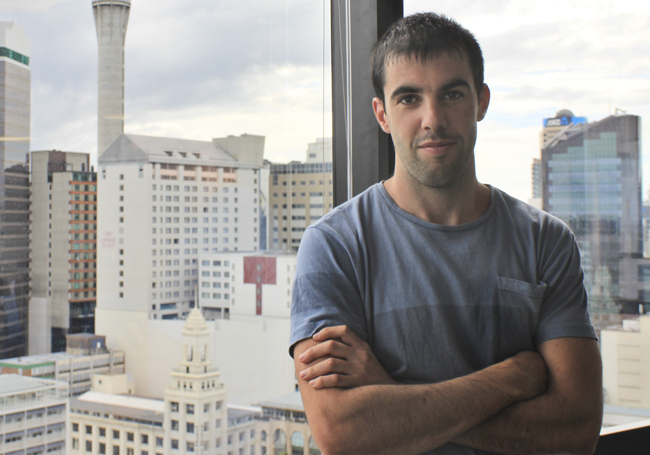The lactate threshold is regarded as a tremendously useful physiological variable not only for calculating the performance of endurance athletes but also for providing backing when prescribing their training sessions. A study carried out by two GCIS research groups of the UPV/EHU’s Faculty of Engineering - Bilbao and the Department of Physiology proposes a system for calculating it in a non-invasive, accessible way.
-

Ferreirak eta Bengoetxeak beren programak aurkeztu dituzte UPV/EHUko Klaustroan
-

UPV/EHUko 19 diziplina, munduko 500 onenen artean, Shanghaiko rankingaren arabera
-

Zientzia, Ingeniaritza eta Arkitekturako monografiarik onena
-

Medikuntza birsortzailearen etorkizunari buruzko gakoak
-

Beste pertsona bat al gara beste hizkuntza bat hitz egitean?
A simple, reliable system for calculating the lactate threshold in athletes is proposed
The method has emerged out of a piece of research conducted by groups in the departments of Engineering and Physiology of the UPV/EHU-University of the Basque Country
- Research
First publication date: 27/04/2018

Until now, a whole host of methods have been put forward to calculate the lactate threshold. Some of them are based on the use of specialised equipment and/or trained personnel for calculating it; others use field tests to calculate it. While the former are costly and not very accessible, the latter cannot achieve the reliability needed for them to be applied. It is in fact right here that this project developed at the UPV/EHU is situated; it sets out to come up with an accessible, non-invasive reliable system to assist in the decision-making of the athlete and/or trainer.
So this research has proposed a system of machine learning that seeks out the relationship between easily measureable physiological variables and the lactate threshold. That way, through the relationship learnt, the system is capable of calculating the lactate threshold of new athletes.
To develop this system, the project has used a sample of over 140 runners of different levels and characteristics so that the target population of recreational endurance athletes can be represented in the best way possible.
An applied perspective
“The main aim of the project is to create a system that can actually be applied and be of use for athletes and trainers. So it aims to be a tool to support decision-making and which is easy to incorporate into the tool box of the trainer or athlete, so that it can be used to complement his/her knowledge,” explained Urtats Etxegarai.
In a system as complex as the human body, the differences between individuals are huge, even within what can a priori appear as a well-defined population as are endurance recreational athletes. That is why the main challenge facing this project is to come up with a system that is valid for such a widely differing population.
Given that the information gathered into a database is always limited, the learning capacity is equally limited. “The approach we are making in this project is to use this information to achieve our main goal: reliability. On an equal basis, the most simple models are most likely to be correct and that is why in this initial piece of work we have focussed our efforts on creating as simple a model as possible that can obtain satisfactory results,” added Etxegarai.
So the results show that they are capable of calculating the lactate threshold within the established limits with 89% accuracy, all by using a relatively simple model.
The group is currently working to validate this first model and implement it in collaboration with the enterprise Grupo Campus S.L. to create the first working product. After that, they will endeavour to improve the reliability of the system by creating personalised models.
Additional information
Urtats Etxegarai is a pre-doctoral researcher in the consolidated GCIS group of the UPV/EHU’s Department of Systems Engineering and Automation. The group’s research focusses on automatic learning methods that can be applied to the field of sports, placing emphasis above all on creating systems to support the decision-making of athletes and trainers.
This research work was done thanks to the backing of the Campus Group (LACTATUS 2016 LACTATUS projects), the Basque Government’s Department of Economic Development and Competitiveness (Gaitek 2015), the Basque Government’s Pre-doctoral programme (PRE 2015 1 0129) and the Erasmus Mundus International Mobility Programme PANTHER (Pacific Atlantic Network for Technical Higher Education and Research).
Bibliographic reference
- Estimation of lactate threshold with machine learning techniques in recreational runners
- Applied Soft Computing (2018)
- DOI: 10.1016/j.asoc.2017.11.036.


